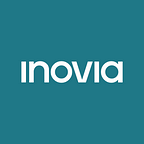Founder-to-Founder: Annie Cyr, CEO and Co-Founder of Tengiva, on Building Something New in an Antiquated Industry
Tengiva (Textiles Exchange Network Generating Innovation, Value and Accessibility) was created to solve one of the biggest industry challenges for emerging clothing designers, the ability to source materials quickly, cost-effectively, and sustainably. On May 4, 2022, Tengiva, the first digital supply chain platform for the textile industry, announced that it had raised CAD$4.95 million in seed funding.
Annie Cyr, the CEO and Co-Founder of Tengiva, joined us for a conversation about her journey in building a company in an antiquated industry.
Annie, tell us about your background and your journey to where you are today.
In university, I took an Industrial Fashion Management program where I met an incredible professor who taught a class on textiles. I had a chat with her after class one day and told her that there was no book on the market to teach us what she was teaching, so she challenged me to write one. I spent the next three years writing and publishing a book on textiles.
From there, I worked in the textile supply chain for a few different businesses; what an incredible learning experience. I absorbed as much as I could, but I realized the processes in place were long and arduous; I knew there had to be a better way. Shortly after this realization, my co-founder and I decided to launch Tengiva.
In reading about your background, I love that you embarked on a journey to build something new in an antiquated industry and would love to talk about that — what were some of the early challenges to blazing a new trail?
Building for an antiquated industry means a lot of trial and error.
When we did our first beta, we tested it on the supplier side (those with the material), and tried multiple approaches. Some of those approaches resonated, but others did not. The challenge was figuring out how to balance efficiency with sustainability and meet our customers where they were at.
When we launched the second beta, we took the lessons learned from the first try and looked at how we could create more efficiencies while also putting the needs of our customers first. One of the areas we looked at was how brands request and receive fabric samples from mills, as it’s a very hands-on, tactile process. For example, we knew it didn’t make sense for the mills to ship paper-size swatches from Turkey to Canada and pay the shipping fees, so we built a centralized sample management warehouse. That solved a central pain point for our customers but fit into their existing process.
When you’re building for an antiquated industry, it is essential to align the technology you’re developing to your customer’s existing processes. You want to test, get feedback, and iterate often. The challenge is not to force a new way of doing business on people who have been working a certain way for years.
Did you overcome any resistance in the market, and if so, how did you push through those barriers/challenges?
The key to successfully disrupting an industry is understanding every stakeholder in the ecosystem you are working in. For example, in textiles, there is an established culture, and as a disruptor, you don’t only want to come in and radically change their culture. You want to elevate how people currently do things and make it easier or more cost-effective while respecting the existing culture.
When introducing Tengiva to the market, we kept the existing culture of the industry and our conversations with prospects top of mind, which helped immensely. It reduced pushback, and we got ahead of any potential objections from the market. We were able to have conversations from a level playing field.
When you don’t have a bunch of playbooks to follow from companies who have been there, how do you decide what to do first and what to prioritize from a product perspective?
It is difficult to do because when you don’t have playbooks to follow, you must constantly challenge your model to see where your weaknesses are. Thankfully, there are so many great resources online, articles to read, etc., which can genuinely help you look at a specific approach in a new light, but as the CEO, it’s a lot of holding the vision and revisiting the plan often. The key is never to stop evolving. Never stop learning and growing.
Honing in on the vision piece, I think you need to have a powerful vision to succeed as a disruptor. Some people will look at the competition and think, “We should do it as they do!” or “We need to do things extremely differently!” but you should have your path no matter what others do.
What are your biggest lessons learned now that you are where you are?
I love this question and would love to share the three tips that I share with all entrepreneurs.
First, fall in love with the problem, not the solution.
Second, try to be better than yourself, not others. Do things your way. Be aware of the competition and the ecosystem but do things your way.
Third, learn as much as you can through relevant experiences. What made a significant difference for us in tackling such a vast industry was the experience we had in the industry before building Tengiva. Use the opportunities you have. For example, if you want to make something for the restaurant space, go and work for six months in the industry to learn what you love and hate and use it as fuel for your business model.
If I may add a final one, remember to enjoy the journey!
